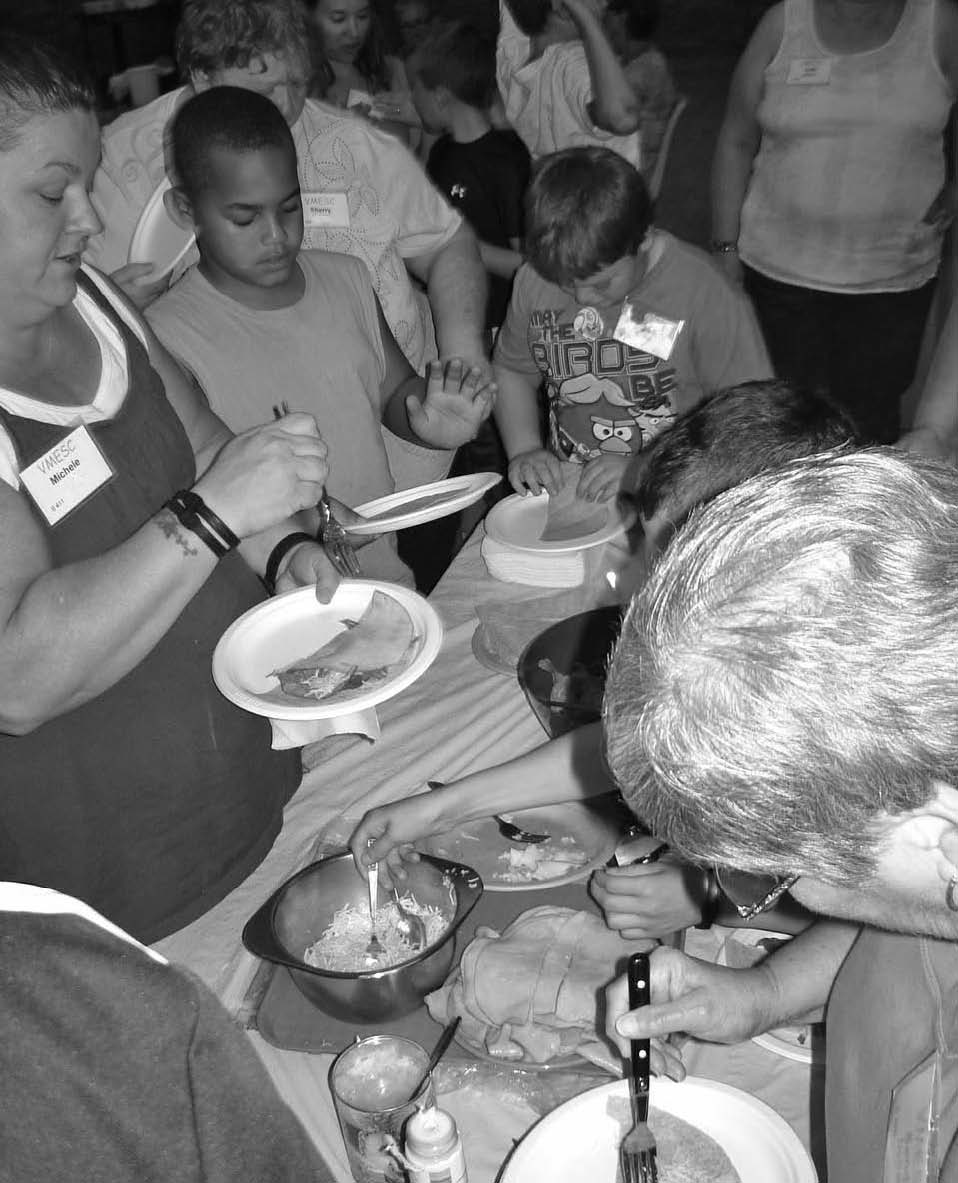Time: 45 minutes
Introduction
Most adults have noticed that food portions have gotten larger at restaurants (and maybe even in our own homes). Some portions are called "super size," while others have simply grown in size and provide enough food for at least two people. With this growth has come increases in waistlines and body weight. Unfortunately, younger generations do not know that portion sizes have increased and, they don't know what is a normal or average portion.
In 2010, obesity in the U.S. was addressed for the first time in the dietary guidelines which are updated every five years. Key messages include: balance your calories, enjoy food but eat less, and avoid oversized portions.
Overview
This activity will address this issue of portions, how they have changed in size, and what individuals can do to prevent weight gain from these current excessive portions. Individuals are shown several food items (e.g. bagels, spaghetti, French fries) comparing the average portion of twenty years ago and today's portions. Individuals are provided the calories in the portion of 20 years ago. They must guess the calories in today's portion size.
Game option: "Family Food" is played in family groups that will be expected to come up with a group answer. Each group is presented with a question. Several possible answers are presented from which they can choose.
Objectives
General Objectives
- Participants will observe the number of calories in selected food portions of today as compared to 20 years ago.
- Participants will describe how increases in calories require additional physical activity to offset weight gain.
Specific Objectives
Participants will be able to:
- estimate the calorie content of current-day food items as compared to similar food items 20 years ago.
- estimate the number of minutes of exercise it will take to burn the extra calories provided by current-day foods.
Materials/Resources
- 5 Portion Distortion Handouts
- One bell for each team (optional)
- Prizes for winners
- Handout: "Strategies to Control Portion Distortion while Eating Out"
- Flipchart; several flipchart sheets will be given to each family
- Markers
Steps
- Split group up into single or double family groups with 4-6 people in each group.
- Give out the first of five Portion Distortion handouts (French fries).
Handout 2-4 (1): Portion Distortion (French fries) - In a game show-like format, have each family or multi-family team guess the correct answer. All family members must be included in final decisions. The teams with the correct answer (610 calories) get one point.
- Proceed to the next Portion Distortion handouts, one at a time, and for each repeat the process noted above.
The correct answers are as follows:
- French fries: 610 calories
- Cheeseburger: 590 calories
- Spaghetti & meatballs: 1,025 calories
- Bagel: 350 calories
- Soda: 250 calories
- Once all questions are answered (in the game version) ask each intergenerational/ family group to discuss and identify a variety of strategies they can use as a family to decrease portion sizes. Encourage different members of the families to identify specific strategies that they are willing to implement. (See list in the handout for examples of specific strategies the facilitator can use in case the families are at a loss for practical strategies.)
- Each family will use flipchart paper to list strategies that then can be shared with the whole group. This list can then be typed up and shared with everyone as a handout to take home. Ask families to identify a minimum of three strategies (at least one per person) that they will implement in the next few weeks. The more strategies, the better! If possible, have participants report back at the next meeting how some of the strategies worked.
To further discussion about ways to control "portion distortion," distribute and discuss the "Strategies to Control Portion Distortion while Eating Out" handout.
Handout 2-4 (6): Strategies to Control Portion Distortion while Eating Out
Using food models is another effective way to help participants see (and feel) what is a proper portion size.
Considerations
Depending on the format chosen, discussion can take different forms. Keep families on topic and keep to positive solutions. Not eating out is not a realistic option; sharing a meal rather than ordering two separate meals is an option.
Tell participants that in addition to the portion size, many times the way the food is prepared significantly increases the calories. For example, French fries have many more calories than a baked potato or plain boiled potato. Parents and grandparents may have eaten mashed or boiled potatoes almost every day for dinner. It was a very common vegetable to serve at dinnertime. Nowadays, the younger generations eat French fries or fried potatoes. Both generations eat potatoes, and quite a bit of them, but one form is higher in calories than the other, thus adding to possible weight gain.
This activity could be used to launch a provocative discussion about fast food.

Another way to control portion size is to give people more control over the amount of food they put on their plate. [Photo: From "MyPlate Roll-up," a make your own snack activity conducted at the FRIDGE-Farms Retreat (Villa Maria Education and Spirituality Center in Lawrence County, PA. July 26-28, 2013).]
Contact Us

- Professor, Intergenerational Programs and Aging
- Email msk15@psu.edu
- Office 814-863-7871
Contact Us

- Professor, Intergenerational Programs and Aging
- Email msk15@psu.edu
- Office 814-863-7871

